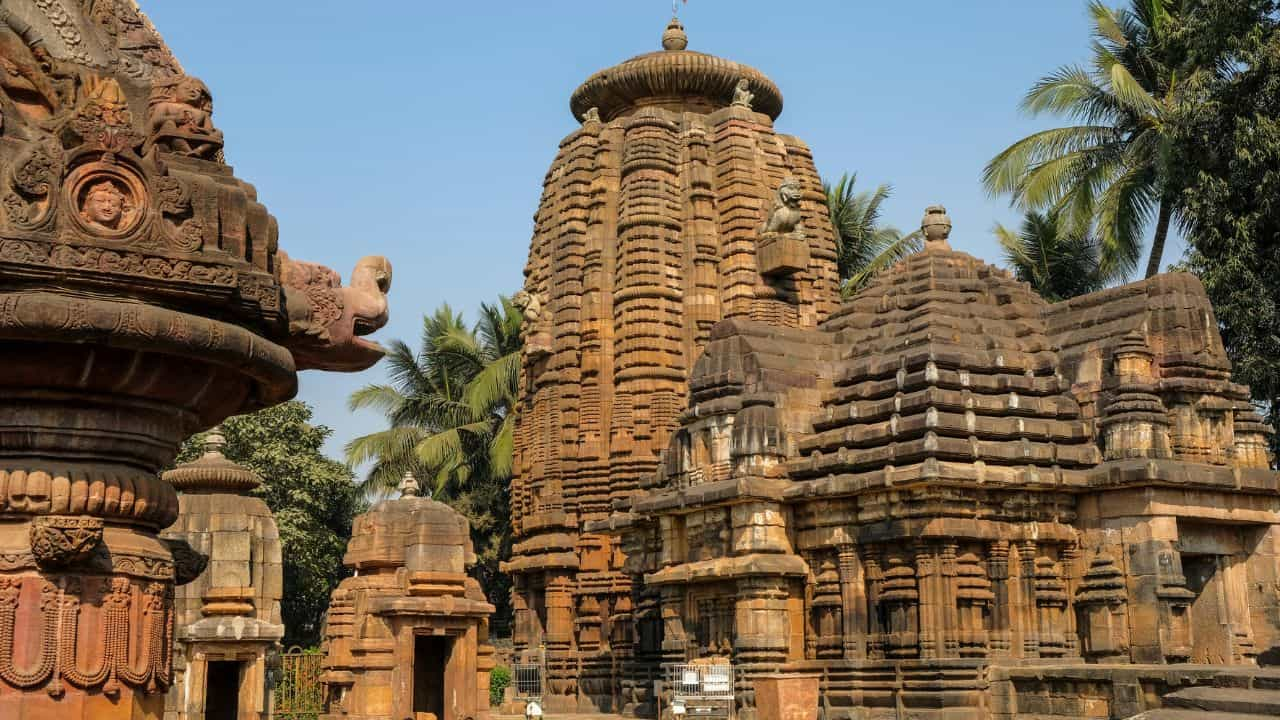-
Lingaraj Temple: The magnificent, towering symbol of Bhubaneswar. This 11th-century temple is dedicated to Lord Shiva and is the pinnacle of Kalinga architecture. Its main spire, or deula, soars to a height of 180 feet, dominating the city’s old quarter. The entire complex is vast and contains over 50 smaller shrines. The intricate carvings that adorn its exterior are breathtaking in their detail and craftsmanship. (Note: Non-Hindus are not permitted inside the main sanctum but can get an excellent view from a dedicated viewing platform located outside the temple walls.)
-
Mukteshwar Temple: Widely regarded as the “Gem of Odisha Architecture,” this small but exquisitely detailed 10th-century temple is an absolute masterpiece. It is most famous for its stunningly ornate stone archway, or torana, which serves as the entrance. The temple perfectly blends intricate carving with architectural harmony, making it one of the most beautiful in India. The annual Mukteshwar Dance Festival, held here, is a major cultural event.
-
Rajarani Temple: Often called the “Love Temple” for its beautiful, sensuous carvings of celestial maidens (apsaras) and couples. What sets this 11th-century temple apart is its unique spires, which are clustered together in a style reminiscent of the temples of Khajuraho. Set in beautifully manicured gardens, it is admired more as an architectural marvel than a religious site, as it has no presiding deity.
-
Udayagiri and Khandagiri Caves: A journey back to the 1st century BCE. These twin hills are honeycombed with rock-cut caves that were carved out as residences for Jain monks under the patronage of King Kharavela. While Udayagiri has more elaborate caves with intricate carvings depicting royal processions and mythological stories, Khandagiri offers a stunning panoramic view of the city from its summit, where a beautiful Jain temple still stands.
-
Dhauli Giri Shanti Stupa: A powerful symbol of peace, this pristine white stupa stands majestically on the Dhauli hills, overlooking the plains of the Daya River where the Kalinga War was fought. Built by the Japan Buddha Sangha in the 1970s, it is a serene and contemplative spot. Nearby, you can see the famous rock edicts of Ashoka, where his profound remorse and his commitment to non-violence are carved into stone for eternity.
-
Nandankanan Zoological Park: A large and modern zoo set in a beautiful natural forest environment, famous for being one of the world’s most successful breeding centers for the majestic white tiger. It also includes a beautiful botanical garden and a large lake for boating, making it an excellent family destination.
-
Odisha State Museum: For those who wish to delve deeper into the region’s incredible heritage, this museum is a must-visit. It houses a rich collection of sculptures, ancient coins, palm-leaf manuscripts, traditional musical instruments, and stunning examples of Pattachitra paintings, offering a comprehensive look at the art and history of Odisha.












